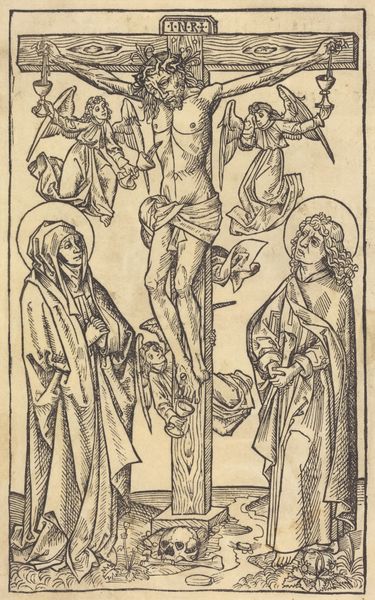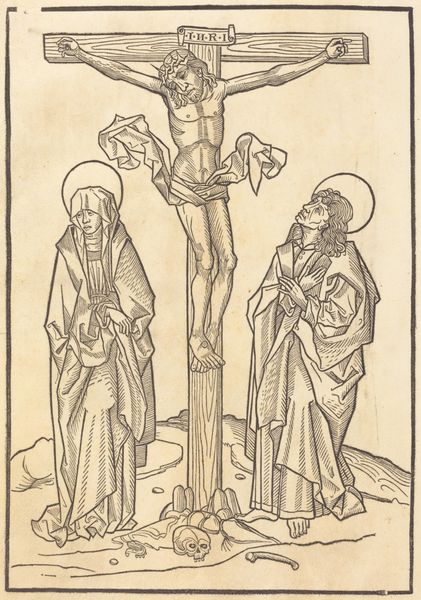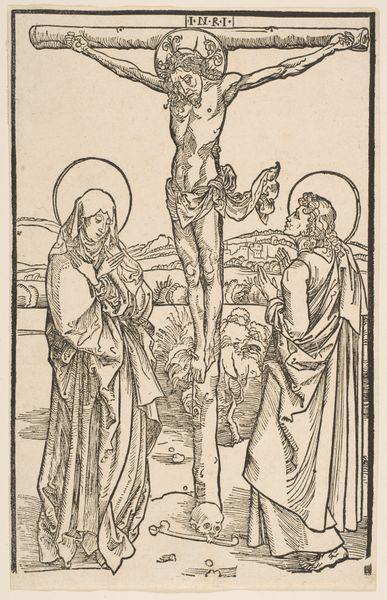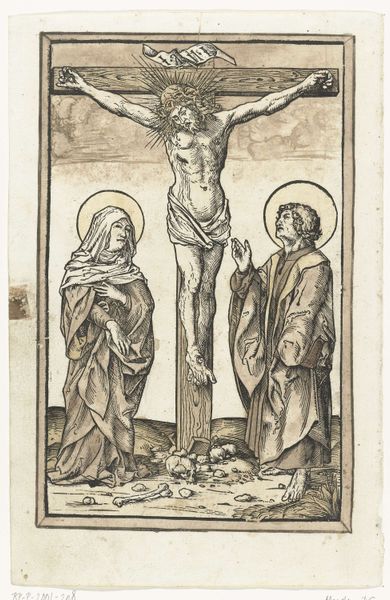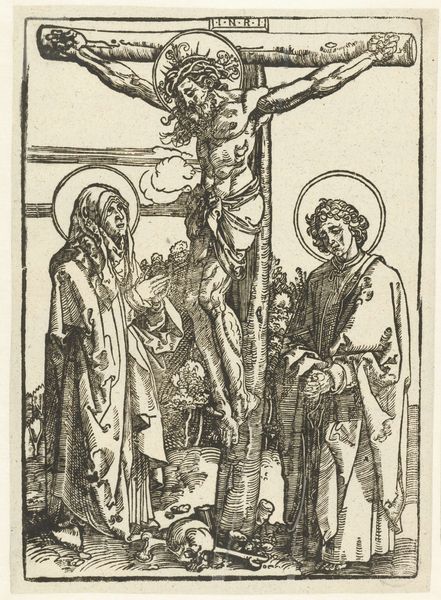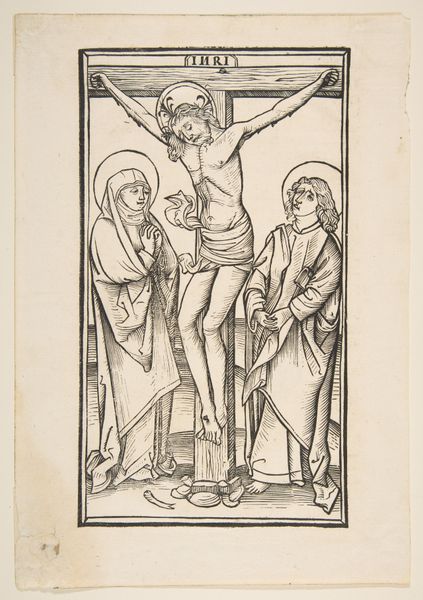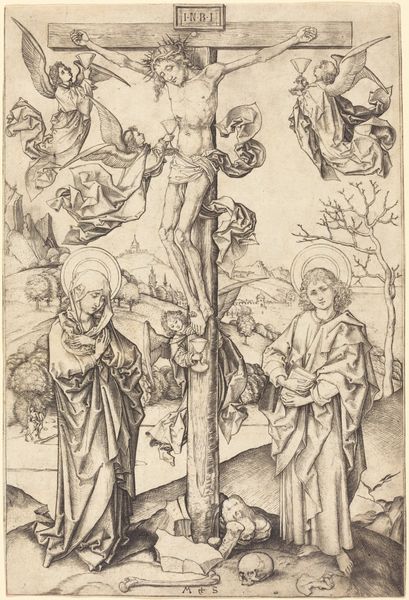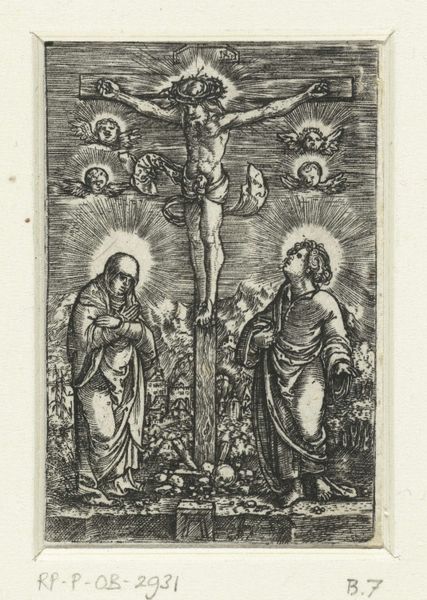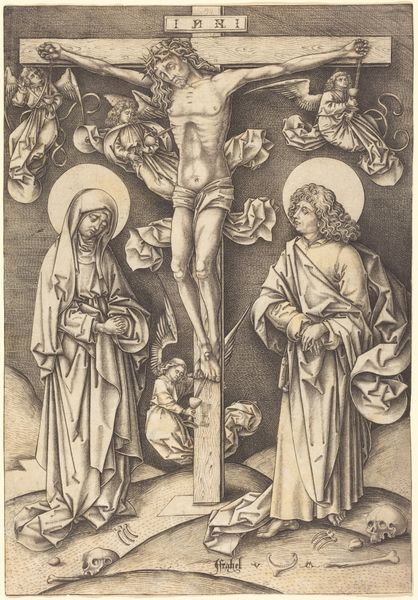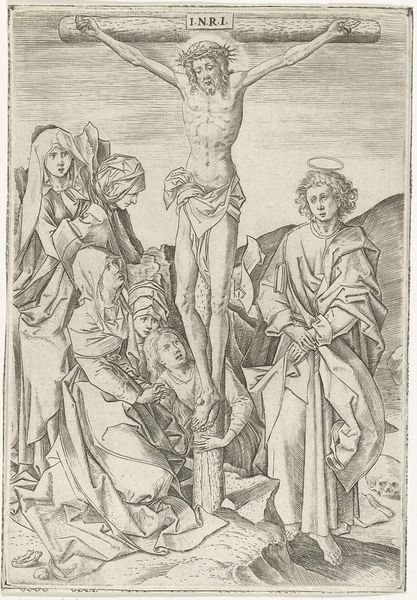
print, woodcut, engraving
#
medieval
# print
#
figuration
#
woodcut
#
history-painting
#
northern-renaissance
#
engraving
Copyright: National Gallery of Art: CC0 1.0
Curator: At first glance, the composition feels rigid, almost austere. The stark lines and the dense arrangement of figures around the central cross definitely convey a somber tone. Editor: Today we are considering an anonymous print dating from around 1490 to 1500 entitled "Christ on the Cross with Angels," a striking example of late medieval or Northern Renaissance printmaking. It's rendered in woodcut, or possibly engraving. Curator: I'm interested in the production of devotional imagery like this. A relatively inexpensive medium like woodcut or engraving democratized access to religious iconography. Instead of commissioning a costly painting, more people could possess and contemplate this image, connecting it to growing mercantile networks. Editor: Absolutely. The print's power resides in its capacity to activate dialogue concerning not only salvation but the realities of power. It embodies complex theological ideas that also had profound social and political resonances. Christ’s suffering invites a deeper understanding of marginalization and injustice in our own time. Consider the female figure. Curator: She looks to be the Virgin Mary, shown with clasped hands. Given her presence, one assumes there are certain viewers the printer may have tried to speak to specifically, since there may have been demand for this type of devotional figure in one’s private collection of engravings. Editor: Certainly. Furthermore, consider the angels gathering Christ's blood in chalices. We should note that it implicitly addresses not just Christian viewers, but potentially female viewers. Such depictions of the Eucharist underscored the divine feminine principle represented through collecting the spilling blood and turning it to nourishment, both corporeally and spiritually, thereby connecting viewers to theological perspectives and gender constructs of the time. Curator: Thinking about production again, prints like these often served as prototypes or templates for other artistic forms, even influencing the design of tapestries or stained glass. So even a relatively humble print had the potential for wider material and aesthetic influence. Editor: It certainly encapsulates this convergence of piety, art, and social consciousness, don't you think? Curator: I concur; examining it through materiality and production really highlights the intersection of religious practice and artisanry. It opens our eyes to the function that reproducible graphics served during this era. Editor: Precisely. Hopefully our viewers will walk away recognizing how cultural forces always shape and permeate even what seem to be exclusively "religious" representations.
Comments
No comments
Be the first to comment and join the conversation on the ultimate creative platform.
